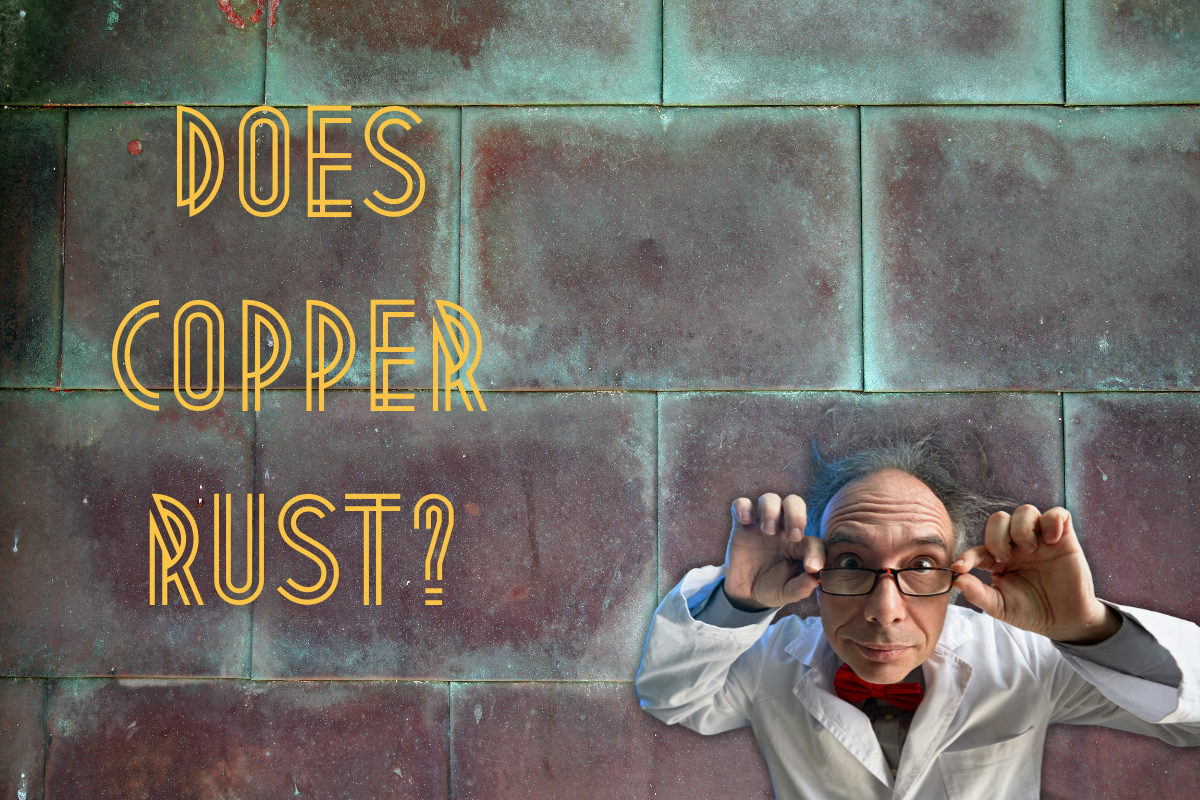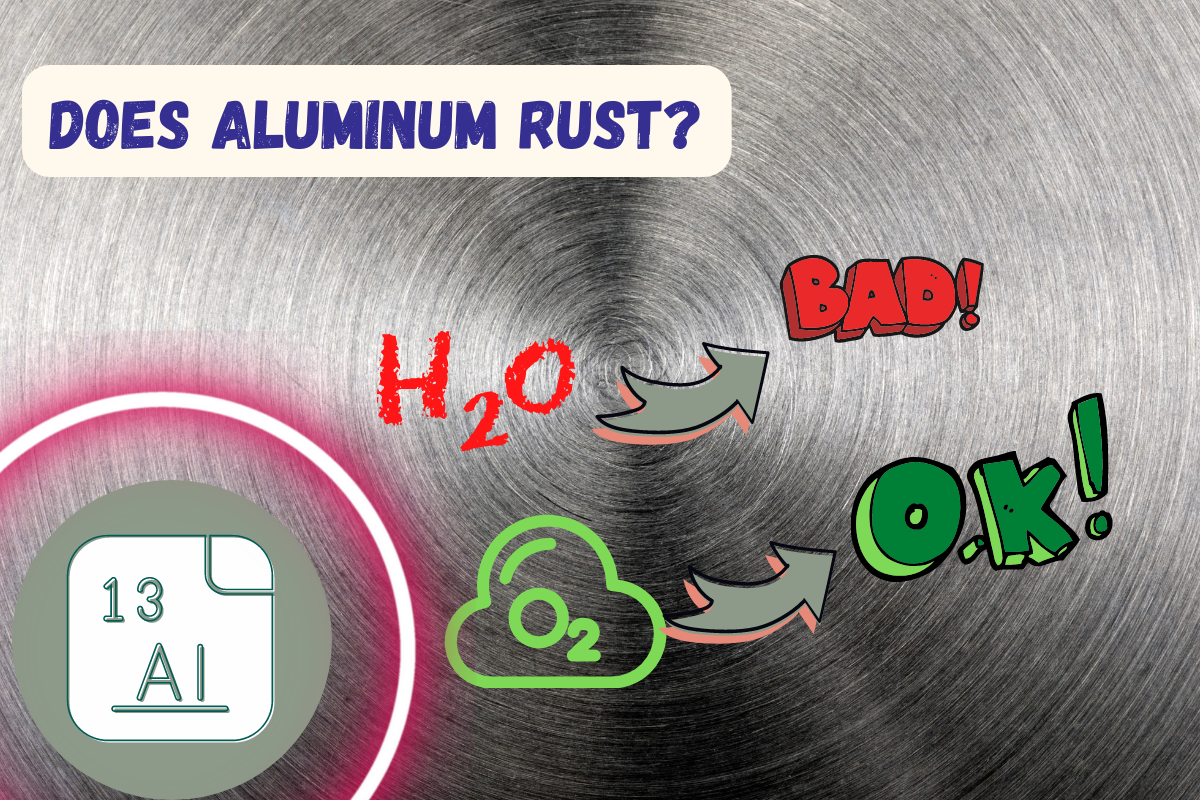Have you ever come across an old cannonball and wondered about its history? Is it worth anything? How old is it?
I assume you have since you’re here. As most metal detectorists will, I understand the excitement and intrigue a find like this can present. Identifying a cannonball can be a fun and exciting challenge, especially if you are a history enthusiast.
The surest way to identify a cannonball is to determine its weight, diameter, material makeup, and location it was found.
Checking these details against historical references will generally lead you to the origin of your ammunition. For a helpful start on identifying your cannonball, take your time to review the details below.
What Are Cannonballs Made Of?
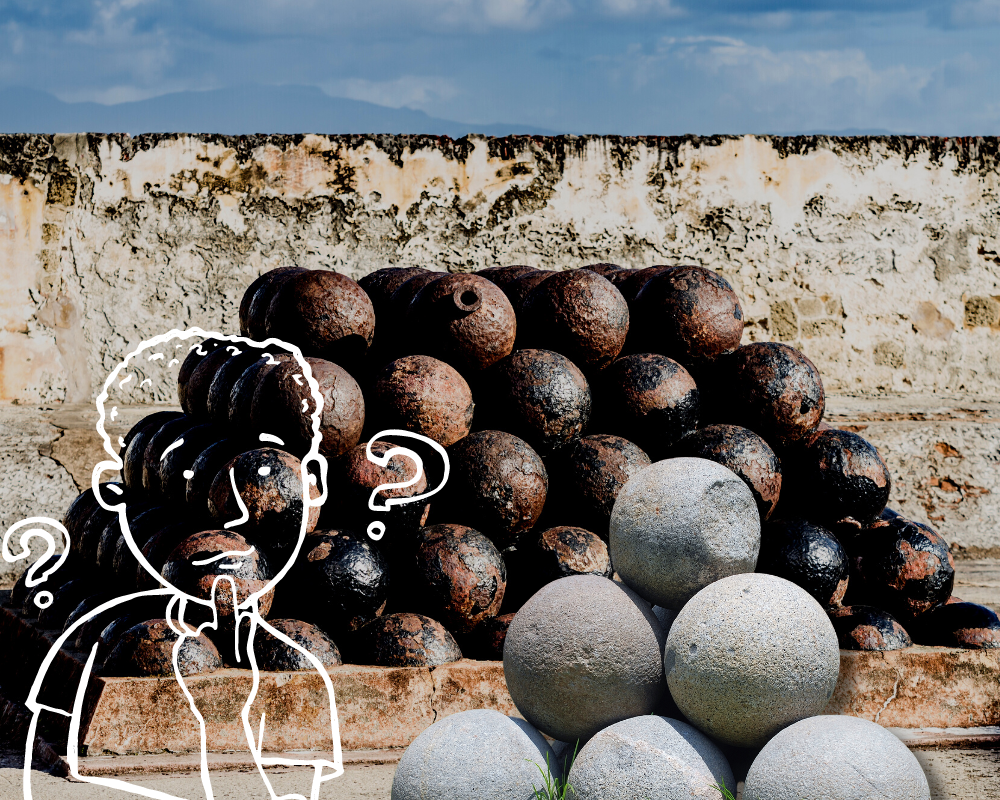
First, a bit of groundwork. If you’re unfamiliar with these old shots of long-range ammunition, it’s best to understand their composition before you try identifying some circular imposter.
While stone and other materials were used in the past, cannonballs are typically made of iron or lead.
Iron cannonballs were the most common type during the Civil War, while lead was more commonly used in earlier periods.
Iron cannonballs are typically more durable and have a longer lifespan than lead cannonballs. They were also easier to produce in large quantities, making them the preferred material for mass production.
However, iron cannonballs are also heavier and more difficult to transport than lead cannonballs. So, not so great for the traveling calvary of yesteryear.
Lead cannonballs, on the other hand, are softer and more malleable than iron cannonballs. This made them easier to shape and customize for specific purposes.

They were also less likely to damage the cannons they were fired from, as they would deform on impact rather than cause damage to the barrel.
Although iron and lead are the most abundant, they aren’t the only types of cannonballs you’ll find.
It is important to note that cannonballs from different eras may have different compositions and characteristics. For example, some cannonballs from the 17th century and earlier may have been made of stone, while others may have been constructed of brass as recently as the 18th century.
Ultimately, the make of a cannonball had a lot to do with the desired effect. An iron shot was perfect for pulverizing the walls of a fort or castle. A follow-up shot made of stone provided enough impact to bring the weakened wall down for good.
But enough of the history lesson. Let’s talk about identification.
Visual Inspection
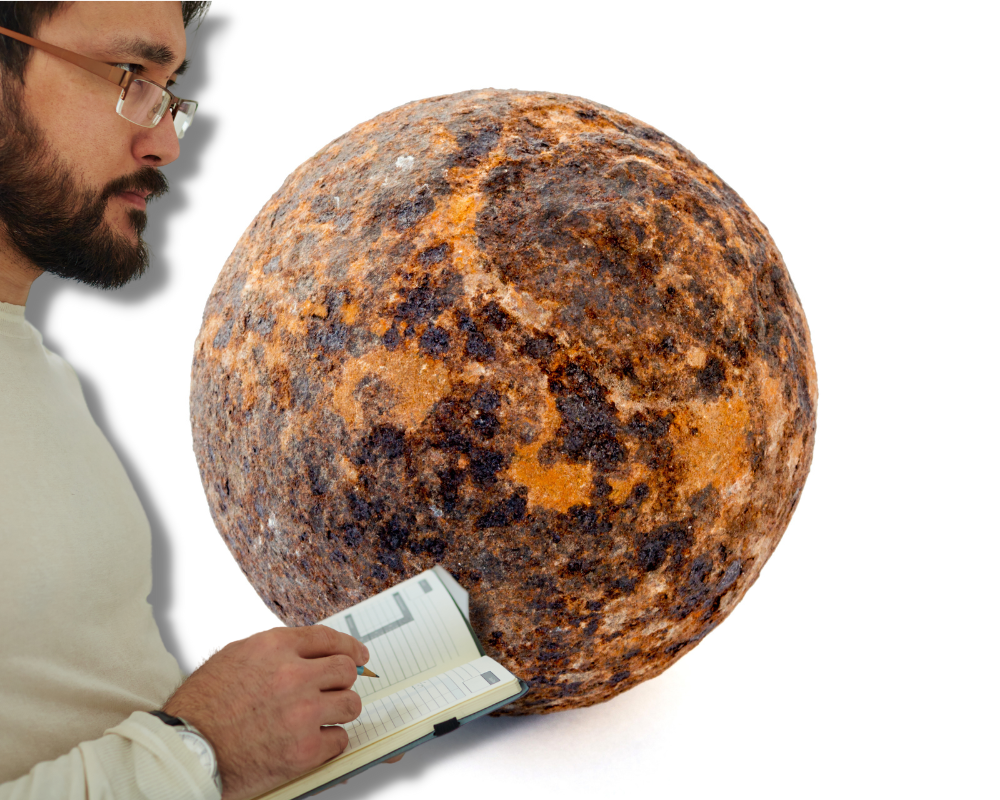
When identifying a cannonball, it is essential to consider its material and any distinguishing features, such as markings or casting patterns.
Once discovered, iron cannonballs often have a rough surface texture and may show signs of rust or corrosion. Despite years of exposure to the elements, lead cannonballs may be more uniform in shape and have a smoother surface texture.
Whether or not you find your cannonball with numerical markings or signs of rust, there are no better identification clues than its size and shape.
Cannonball Size and Shape
Determining its size and shape is the first and best step in identifying a cannonball.
Cannonballs can be found in more forms than just oversized marbles. But getting familiar with the different eras and locations of use will help you find your match.
While it’s not a fully referenced manual, the following chart provides a general guide to the most common cannonball sizes and shapes.
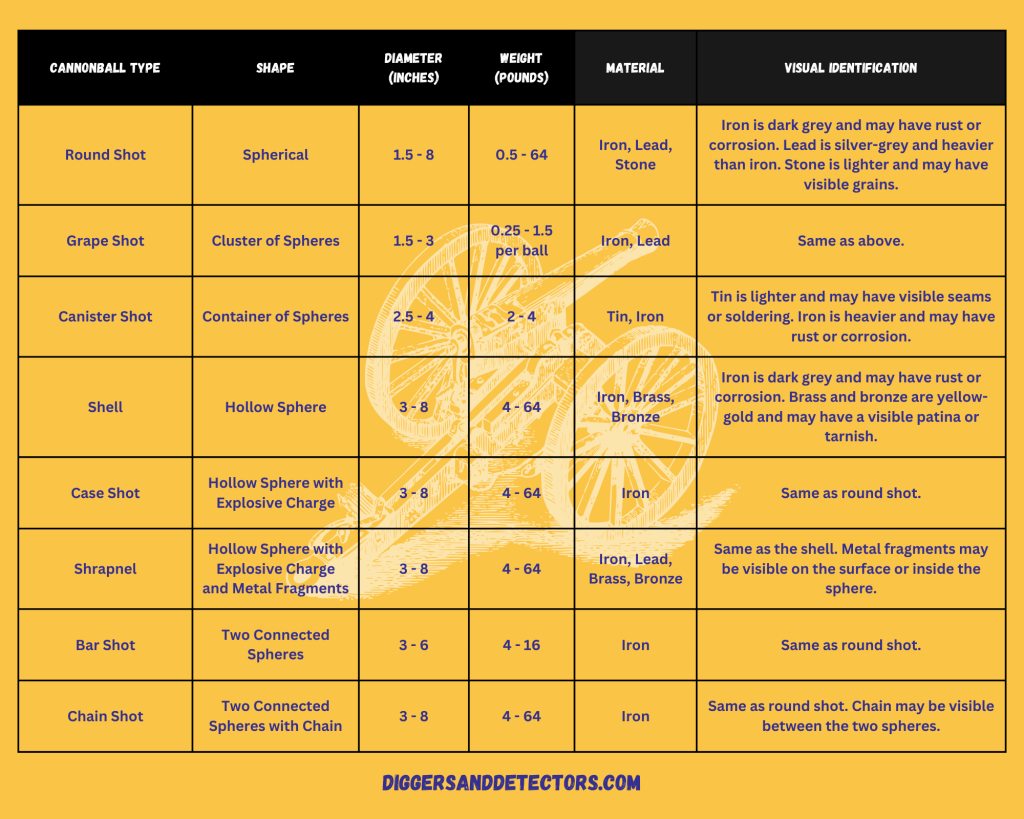
It’s important to note that these sizes and weights can vary depending on the period and location in which they were used. A traditional solid shot cannonball can weigh as light as a grapefruit or as heavy as an adult gorilla.
As I said, some cannonballs may have unique markings or inscriptions that aid identification. But this requires more research on your part.
What To Do If You Find a Cannonball
Maybe this should have been mentioned first, but if you stumble upon a cannonball, stop and consider the consequences of disturbing it.
Cannonballs can be dangerous, especially if they are old and unstable. It’s best to call your local authorities and rely on their necessary expertise and equipment to handle the situation safely.
Once the cannonball has been inspected and identified as safe, it may be possible to keep it. However, this will depend on local laws and regulations.
Did you find it on public land? Was it dug up on a historical site? These answers and others will lead you to your answer.
The agencies you would need to contact will depend on your location, but here are some general guidelines:

Local level: You may need to contact your local police department, fire department, or bomb squad. You can also check with your local historical society or museum to see if they have any information on the regulations for historical artifacts.
Make sure you check the boundaries of the discovered area. Several local parks are under the guidelines of city ordinances or preservations societies with rules you’ll need to follow.
State level: You may need to contact your state’s historic preservation office or department of natural resources. They can provide information on the laws and regulations regarding historical artifacts.
This can also include beaches or smaller bodies of water. Don’t assume empty areas are ungoverned.
Federal level: Consider contacting the National Park Service or the Department of the Interior. These agencies can provide information on the regulations for historical artifacts on federal lands or properties such as National Forests and archeological sites.
Not only will reaching out give you peace of mind about ownership, but you may also learn more about your find.
Going Out With a Bang

Identifying cannonballs can be a tricky endeavor. Unlike the usual markings found on old relics, like antique axe heads, cannonballs give you little to go on besides their physical properties.
But using those physical attributes along with the location it was found will give you a headstart on getting to the truth. When in doubt, ask for help from a local history buff.




